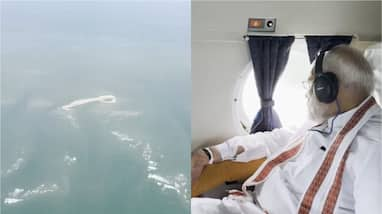
The 'Surya Tilak' ceremony, conceptualized by Modi, was designed to blend ancient traditions with modern technology. Nripendra Misra, chairman of the Ayodhya Ram Temple Construction Committee, revealed that Modi envisioned the integration of contemporary scientific methods to enhance the temple's spiritual practices. This led to the development of a system employing mirrors and lenses to direct sunlight precisely onto the idol's forehead at noon on Ram Navami.
While en route from Colombo, Modi watched the live telecast of the ceremony on his tablet. Photographs shared on social media depicted him seated in the aircraft, shoes removed as a mark of reverence, engrossed in the event. He expressed that witnessing the 'Surya Tilak' was an "emotional moment," emphasizing its significance for millions of devotees.
The 'Surya Tilak' ritual involved a meticulously engineered arrangement of four mirrors and two lenses, channeling a 5.8-centimeter beam of sunlight onto the deity's forehead for approximately three minutes. This endeavor required collaboration among scientists and experts from Maharashtra and Karnataka, who worked to ensure the precise alignment necessary for the ritual.
In his address during an election rally in Nalbari, Assam, Modi highlighted the historical importance of this Ram Navami, noting that it marked the first time in 500 years that Lord Ram was celebrated in his own temple. He remarked on the "new atmosphere" permeating the country, attributing it to the confluence of centuries-old devotion and a renewed era of hope and progress.
The Prime Minister's visit to Sri Lanka was marked by the inauguration of a 120-megawatt solar power plant and the signing of key defense and energy agreements with Sri Lankan President Anura Kumara Dissanayake. These initiatives aim to bolster India's strategic and economic influence in Sri Lanka, particularly amidst concerns over China's expanding presence through development loans and infrastructure projects such as the $3.7 billion oil refinery near Hambantota port.
